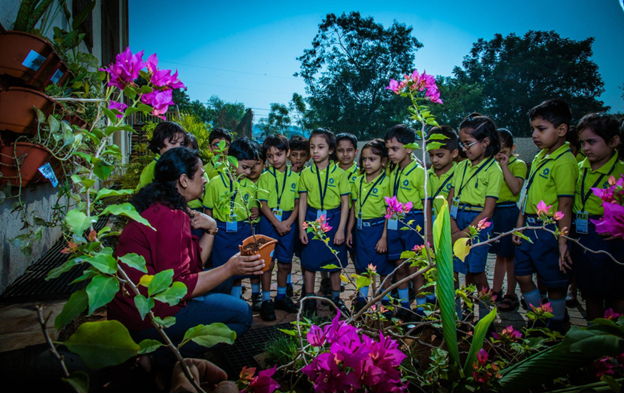The National Statistics Day is celebrated every year on the 29th of June. This day is commemorated to honour the contributions of Professor Prasanta Chandra Mahalanobis (29 June 1893– 28 June 1972) to the field of statistical development and economic planning in the post-independence era. This day, the 29th of June coincides with Prof Mahalanobis’ birth anniversary and was first celebrated on 29th June 2007. The government of India and various other related organisations celebrate this day by conducting various events and activities such as seminars, conferences, discussions, and competitions. The key objective of these events is to celebrate and promote the importance of statistics in the economic development of our country. This day also serves to highlight the contribution of Indian statisticians to national growth and to promote statistics as a field of study.
Who was Dr Mahalanobis?
Dr Mahalanobis was born on 29th June 1893. He completed his education at the University of Calcutta and King’s College, Cambridge. Dr Mahalanobis was an eminent Indian statistician and scientist. He is also regarded as the father of Indian statistics. He was also a member of India’s first Planning Commission post-Independence. He is popularly known for the discovery of the “Mahalanobis Distance” and large-scale sample surveys. Mahalanobis Distance is one of the most popularly used metrics in statistical data analysis. He was instrumental in introducing pilot surveys as a concept advocating the importance of sampling methods in statistical analysis. Dr Mahalanobis was also a founding member of the Indian Statistical Institute, established in Calcutta in 1931. He also played an instrumental role in developing India’s industrial development plan in the second five-year plan.
Themes of the past
Every year the government of India declares the theme of the National Statistics The celebrations and programmes are coordinated by the Ministry of Statistics and Programme Implementation (MoSPI). Day. Past trends have indicated that usually, this theme centres around data and sustainability. The theme for 2023 is yet to be announced. Below are the themes that were followed in the past.
|
Year |
National Statistics Day Theme |
|
2022 |
“Data for Sustainable Development” |
|
2021 |
“Sustainable Development Goal (SDG)-2 (End Hunger, Achieve Food Security, Improve Nutrition, and Promote Sustainable Agriculture)” |
|
2020 |
“SDG3 (Ensure healthy lives and promote well-being for all of all ages) & SDG-5 (Achieve gender equality and empower all women and girls).” |
|
2019 |
“Sustainable Development Goals (SDGs)” |
|
2018 |
“Quality Assurance in Official Statistics” |
|
2017 |
“Administrative Statistics” |
|
2016 |
“Agriculture and Farmers Welfare” |
|
2015 |
“Better data, better lives” |
|
2014 |
“Services Sector Statistics” |
|
2013 |
“Labour and Employment Statistics” |
|
2012 |
“Industrial Statistics” |
|
2011 |
“Gender Statistics” |
|
2010 |
“Child Statistics” |
|
2009 |
“Social Development” |
Importance of Statistics
One of the key objectives to celebrate this day is to promote the importance of statistics in our daily life. The events and themes are designed to stimulate young minds and attract them to statistics as a field of study. Akin to mathematics, there is a popular aversion towards statistics as a field of study, especially among kids. Many of us also believe that statistics are only meant for those in certain specific fields such as research and analytics. Celebrations of National Statistics Day try to overcome this aversion and promote the importance of statistics for common citizens.
The recent trend towards data analytics as a lucrative and much-in-demand profession has brought statistics back into the limelight. Statistics forms an integral component of Data Analytics. Most industries today rely widely on statistical techniques to support their business decision-making. We can find applications of statistics in other fields as well and even in our daily lives.
Following are the popular applications of statistics that we can see in our daily lives:
- Weather forecasting. Using data to predict the temperatures, chances of rain, storm, etc.
- Sales Forecasting. Companies use statistical techniques to predict sales of different products. E.g. how many cars will be sold during the Diwali festival
- Traffic Management. Traffic administrations use traffic data to monitor, track and predict traffic movements.
- Investments. Investors decide their investment portfolios using statistical techniques to predict returns on their investments.
- Insurance. Insurance companies use statistics to calculate the premium one needs to pay depending on various factors such as age, gender, health status, etc.
- Bank Loans. Banks use statistical techniques to decide who should be given a loan and who shouldn’t, and at what interest rates, etc.
- Medical Studies. A lot of statistical analysis was used during the COVID crisis for vaccine development, to understand the spread of the virus, etc. Statistical techniques are used widely in the medical field to understand the correlation between various health metrics and the proliferation of disease.
- Manufacturing. Statistics is used extensively in the field of manufacturing to understand quality and process efficiency.
- City Planning. Statistical techniques also find ample applications in urban planning. Planners use statistical techniques to understand population growth, industrial growth, etc which helps them plan the cities better
- Governance. The governments of the world make extensive use of statistics to design better-suited government policies based on demographics, industrial development, and other relevant factors.
Statistics has many more such applications around us that help make our lives better and more efficient. It is important for students to at least have a basic understanding of statistical techniques. Those looking to pursue a career in engineering, data analytics, or research, will need to be well versed in statistical concepts and techniques. As a profession, the demand for Statisticians is growing exponentially. US News & World has reported it as one of the fastest-growing professions in the world and rated it as #6 in its “100 Best Jobs” list.
At EuroSchool we give due emphasis to the importance of statistics as a field of study for our students. Our educators use immersive techniques to make statistics engaging and fun for our students. Through our course structure, we are able to successfully develop a statistical thinking mindset among our students. This analytical mindset prepares them well to succeed in the highly statistically oriented corporate world.











